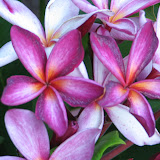DRAFT - August 4, 2013
GETTING
THE ROOTS AND MIX OUT OF THE BAG
WARNING:
The fast growing roots in the bags are exceptionally fragile and the cutting
can easily become separated from the bag of roots, if the cutting is pulled.
Before removing the bag,
prepare your pot with mix having a depression to
receive the root ball.
Removing the
Bag as One Piece
If crowded with
roots, just tear or cut along the seams that run along either side of the bag,
tearing all the way to the bottom.
A razor blade or
exact-o-knife will cut along the seam with ease if tearing is not working out
well for you. To avoid cutting roots which may be under the seam, either tear the
bag or lift the bag away from the root with the razor while cutting.

Removing the
Bag as Two Pieces - Optional
First, with the
bag still tied off to the cutting:
· With a razor or pointed sharp scissors,
make a cut anywhere along the bottom of the bag. Avoid cutting roots by lifting
the bag as you cut.
· Extend this cut such that it joins the
two seams that run up and down on either side of the bag.
· From the point where this first cut joins
a seam, cut along the seam down to the very corner of the bag.
· Repeat this cut to the corner of the
other side.
POTTING UP
Next set the cutting and bag into a hole of your pot mix.
oLoosen and remove the bag tie.
oStart a cut along the top of each seam.
See photos.
oUsing both hands, grab both sides of cut
and pull to tear the seam downward. See photo.
oAfter tearing both sides all the way
down, the bag is now in two pieces.
oSimply lift out the two halves, the root
ball should not have to bedisturbed while removing the bag pieces. See
photo.
 |
 |
Filling the
Pot with Mix
oAdd mix.
oWith fingers in the mix on either side,
move the mix sideways toward the root ball.
oDo
not push down on the mix near the root ball as this will separate the roots from the cutting.













.png)

.png)
.png)


